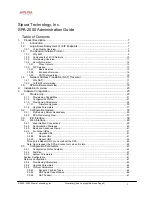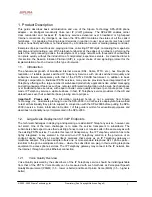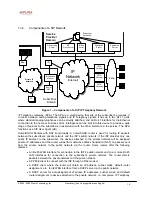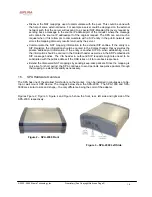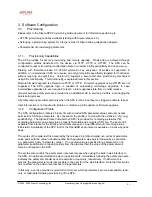
© 2003 - 2005 Sipura Technology, Inc
Proprietary (See Copyright Notice on Page 2)
9
Hardware Noise – Certain levels of noise can be coupled into the conversational audio signals due to
the hardware design. The source can be ambient noise or 60Hz noise from the power adaptor. The
SPA hardware design minimizes noise coupling.
End-to-End Delay – End-to-end delay does not affect Voice Quality directly but is an important factor
in determining whether subscribers can interact normally in a conversation taking place over an IP
network. Reasonable delay figure should be about 50-100ms. End-to-end delay larger than 300ms is
unacceptable to most callers. The SPA supports end-to-end delays well within acceptable
thresholds.
1.3.
The Session Initiation Protocol
1.3.1. Why
SIP?
There are many excellent articles and books that discuss the advantages of SIP.
1
Here are some of
the more popular details:
•
SIP message constructs are very similar to those of HTTP which is well-known to be IP
Network (Internet) friendly.
•
SIP is transport agnostic – meaning it can be used over TCP/IP or UDP/IP, with or without
security.
•
SIP has a better chance of punching through NAT than other control protocols.
•
SIP enables the implementation of intelligent endpoints to support scalable advanced
services.
In a nutshell, SIP is a distributed signaling protocol (as opposed to a centralized protocol such as
SS7, MGCP or MEGACO/H.248). With a distributive protocol, the intelligence does not necessarily
reside on a central server, but can be built into the individual endpoints. By moving the intelligence to
reside within the endpoints at the edge of the network, the processing load of the network application
and associated call servers are significantly reduced, thus making the network a very scalable
solution.



